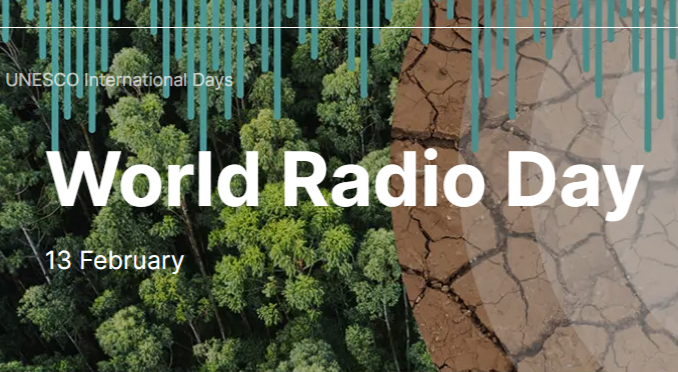
The Digital Radio Mondiale Consortium (DRM) Consortium will mark World Radio Day 2025 on February 13. This event chosen (since 2011) by UNESCO aims to celebrate radio transmissions by all category of broadcasters, such a public, commercial and community stations. The theme for World Radio Day this year is Radio and Climate Change, which focuses on “empowering radio stations to enhance their journalistic coverage of one of the most critical issues of our time,” according to UNESCO.
The DRM Consortium marks this event by reminding all radio stakeholders of the key benefits the DRM standard can provide in tackling the negative effects of the major changes in global climate. This is a natural emergency of huge proportions which has claimed thousands of lives and, therefore, we are welcoming the UNESCO initiative to ‘encourage decision-makers to create and provide access to information through radio…’.
Digital Radio Mondiale (DRM) can be part of the global effort in mitigating the effects of natural or man-made disasters with its fully integrated disaster and early warning service called Emergency Warning Functionality (EWF).
The DRM digital radio standard, which can be used in all frequency bands (below and above 30 MHz), should therefore be the major building block of a national emergency warning policy, providing full and continuous alert services, audio, text, maps in more than one language, potentially even from remotely located transmitter sites, when all other internet or TV towers fail in the disaster areas.
EWF support in receivers can be ensured with no need for special chipsets or extra adaptations for this alert system. Everything needed for EWF is already in the radio receivers, built according to the specifications issued by the DRM Consortium.
To ensure that this digital service is effective, key requirements (and immediate advantages) are necessary:
- Send notifications to a maximum number of people in the affected areas as promptly as possible
- Must cover large areas with very high reliability (with DRM being the only standard running in all frequencies and providing local, regional, national and international coverage, as required)
- Must work when common information services and local services fail
- Make warnings available on devices that people use on daily basis (desktop, pocket receivers, cars)
- Reach devices that are still operational, if electricity fails (i.e. radio sets and other devices with independent energy source)
- Be as un-intrusive as possible for daily use
- Must be available and continuously on-air for the duration of the emergency in one or several languages
- Control of emergency notification and immediate access by authorities
- Make emergency messages available to the widest possible audience, including the visually or hearing impaired with complete and detailed information by audio and multilingual on-demand advanced text on receiver screens (Journaline)
For more information about the benefits of the DRM Consortium integrated warning and emergency system, please place ewf.drm.org in your browser to be able to access and download the documents describing in detail this life-saving digital radio service.
For a quick demonstration on how a regular radio transmission can be switched to an emergency alert using a digital receiver please watch: s.drm.org/video-ewf.
